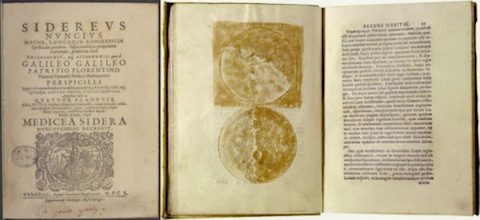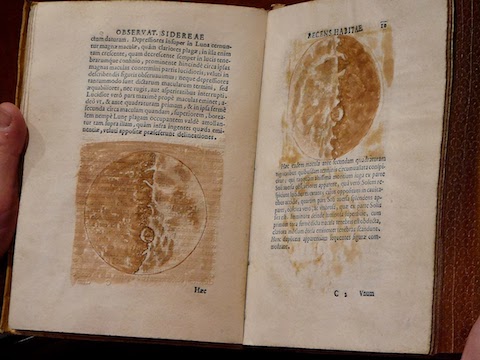The full extent of the losses is not known — the Girolamini Library lacks a complete catalog — but prosecutors, with some bombast, have compared it to the destruction of Dresden during World War II. In 2012, the authorities recovered more than a thousand library volumes that were found in a self-storage unit in Verona traced to Mr. De Caro.
These gorgeous works were unfortunately fakes…

…Like many forgers, De Caro acted out of a mixture of greed, envy, and a desire to prove himself to a field he felt did not recognize his talents (De Caro also forged a copy of Galileo’s 1606 Compasso to replace a stolen version). A college dropout, he “held an imperious grudge against people who had spent years studying in libraries,” writes Schmidle. Instead, De Caro had earned an honorary professorship by donating four Galileo editions (presumably genuine) and a chunk of meteorite to a private institution in Buenos Aires…
…De Caro and an accomplice artist aged several bottles of nineteenth-century ink to create the Galileo drawings, using the Florence Sheet as a guide for the seventeenth-century astronomer’s hand. After opening a bottle of red wine, he had his accomplice trace the outline of the moons with the foot of his wineglass. Then they baked the pages in his home oven to age them. It’s hard to believe De Caro’s fake survived scrutiny for over five years, until Wilding began to express his doubts in 2011…
(How a Book Thief Forged a Rare Edition of Galileo’s Scientific Work, and Almost Pulled it Off, Open Culture).
It’s a fascinating tale and it is particularly interesting after having a discussion on the value of books and their place in society and libraries. The value of a book as artifact is carried separately from the information within the book. The information in the book could be almost worthless and easily replicated but the actual replication of the physical format is what we desire.
